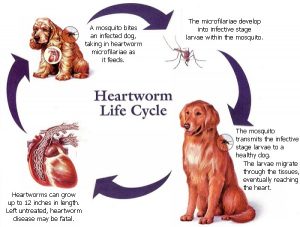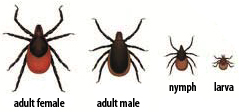Pet Tips for Summer Fun and Water Safety for Dogs

Proverbs 12:10
“A righteous man regardeth the life of his beast: but the tender mercies of the wicked are cruel.”
Commentary
We have several articles on pets in this post because May is National Pet Month, and it’s also the beginning of the summer season. Pets have some unique needs related to this time of year that are worth reviewing and remembering. Happy summer season to everyone (and their pets)!
Be sure to see our previous post on a very crucial topic: PET HEALTH: Dogs and Cars
God bless you.
Pet Health
10 Warm-Weather Survival Tips for Your Pet This is a helpful article with lots of reminders and tips for pet safety in the summer.
BTW, living beside a lake, Audie has his own life-preserver to wear when we go boating, one which is made specifically for dogs. Make certain your dog has one also if he’s going into deep water, even if he’ll be on a boat. While dogs usually can swim, no dog can last forever in waves or if they’re far from shore and there’s an accident! Make sure you buy the right size so that it fits snugly and can’t slip off.
“Summer is just around the corner and with the warmer weather, folks will be spending more time outdoors. So will their pets, and this can present many health hazards for our four-legged friends.
“We see more emergency veterinary visits as the hotter weather approaches because pets haven’t become acclimatized to the heat and their owners may be more laid back about keeping tabs on their four-legged charges,” Dr. Deborah Mandell, a member of the American Red Cross Scientific Advisory Council and a staff member at Matthew J. Ryan Veterinary Hospital of the University of Pennsylvania.
She tells Newsmax Health the following 10 ways to safeguard your pet:
Never leave your pet in a parked car The interior temperature can rise to above 120 degrees in minutes causing potentially deadly heat stroke. “Heavy panting, brick red gums, drooling, and accelerated heart rate are some of the symptoms of heat stroke,” says Mandell.
They may become unsteady on their feet and collapse and have seizures.” Cool any overheated pet immediately using bags on ice on their bellies, pads and top of the nose. Use a cool garden hose and bring the animal immediately to the vet to determine if there has been any internal damage to the organs.
Use sunscreen
Do not exercise in the heat
Practice water safety Always use a lifejacket when boating. The incidence of drowning definitely increases in the summer months, says Mandell. Owners sometimes take their pets to lakes and oceans and presume they will be able to swim against rough currents. Never leave a dog unsupervised in your swimming pool. Make sure the pet knows how to exit safely and install pet-friendly ramps if necessary.
Avoid “high-rise syndrome” Owners open the windows in summer and curious pets may push out the screen and leap out the window to an unfortunate fall. Secure screens and never leave your pet alone on the balcony.
Use flea and tick protection
Use caution at picnics Mandell says one of the most common veterinary surgical emergencies during the summer months is caused by dogs swallowing corn on the cob. “The cobs get stuck in their throat and that’s potentially deadly,” she explains. Make sure others do not feed your dog picnic food.
Guard your garden Azaleas can be toxic to both dogs and cats if ingested. The pollen from lilies can also cause acute kidney failure in cats and ingesting just two of their leaves may be fatal. Lock up plant food containing insecticides
Stay clear of fireworks
Consider a pet safety app The American Red Cross offers a downloadable Pet First Aid App that offers essential information on pet health and safety. The free app contains features that help pet owners identify danger signs in their pet’s health or behavior. It also offers a “click to call” feature to contact their veterinarian and include items that should be a part of your emergency first aid kit.”
Fruits & Vegetables Dogs (and Cats) Can and Can’t Eat There’s an absolutely delightful video on this page that you’ll want to see. It’s one of Audie’s favorites because it features a young golden retriever with his favorite fruits and veggies.
As an owner, this is a page you’ll want to bookmark because we’re coming into the season where fresh fruits and vegetables are plentiful. While most are safe, there are a few entries on the list that you absolutely need to know. These include: grapes/raisins, avocados, mushrooms, onions, asparagus, cherries (which have pits containing cyanide) and tomatoes (because of stems and leaves, which are toxic).
I can attest to the the importance of this info for both dogs and cats. Last week I caught my cat Myron with the second of two ripe tomatoes he’d stolen from the counter. After a heated chase around the house, I finally wrenched the shreds from him and quickly called the vet. Although he said the fruit itself isn’t poisonous, it definitely would upset a cat’s stomach. He was right; in his discomfort for the next day or so, Myron never made the litter box quickly enough.
Many animals love fruits and veggies – my last golden, Zoe, would do anything for apples. Fortunately, except for the seeds, they’re completely safe.
“As dog owners, it’s not uncommon to want to spoil your four-legged family members by sharing table scraps or your favorite snack with them. After all, if it is safe for you to eat, it must be OK for them as well, right? Not necessarily. While many human foods, especially fruits and vegetables, are perfectly safe, some are very unhealthy and downright dangerous to dogs. Dogs digest differently than humans, and eating the wrong foods can lead to long-term health problems and, in extreme cases, even death. As carnivores, they have no need for fruits and vegetables as part of their diet, but an occasional fruit or veggie as a treat is OK.
But that doesn’t mean all human food is off limits for dogs. Read below to find out which fruits and vegetables are OK for sharing in moderation and which should be kept on your plate.”
We’ve all had this experience—a summer day, a drive to the lake, and a refreshing dip for your and your four-footed pal in the clear cool water. Then there’s the agonizing drive home, as you try to keep your eyes on the road, even as you are about to pass out from the smell of wet dog.
Ever wonder what the recipe is for this particularly pungent scent? Scientists did too, and some have started sniffing around for the chemical components that raise this unique stink. Andy Brunning, a British chemistry teacher, has distilled the essence of the complex molecular reactions into an infographic posted on his blog, Compound Interest…
Aroma of wet dog, Brunning explains in an article accompanying his graphic, starts with a cast of tiny critters—yeasts and bacteria—that take up residence on your pet. “When you’re taking your dog for a walk,” he says, “you’re actually taking a whole host of microorganisms for a stroll, too.”
In the process of going about their lives, they leave behind “micro excreta” in the form of volatile organic compounds. The smell of wet-dog, Brunning says, comes from moisture evaporation that carries some of those compounds with it.”
4 Tips To Help Keep Your Dog Safe From Fleas And Ticks
“Flea and tick seasons is almost in full swing, and these pests can cause serious problems for your pup. Fleas can cause severe itching and skin damage, and for every flea on your pet, there could be hundreds of eggs and larvae around your home. Ticks can hide almost anywhere, are difficult to eradicate, and can lead to Lyme disease and Rocky Mountain Spotted Fever – both debilitating conditions. Here are four tips to help keep your dog flea and tick free:
- Prevention is key
- Actively check your dog [and cat]
- Protect your environment, too
- Prevention all year long
 The Truth About Heartworms Heartworms are spread by mosquitoes which bite your dog (or cat) and are deadly. Even treatment for a mature infestation of them is extremely dangerous, so it’s wise to prevent them in the first place. This is a great article by a vet that discusses how pets get heartworms, when your pet should be on preventative medication (depending on your area of the country) and other important facts. Remember that it’s necessary to get a test each year for heartworms before actually beginning preventative medication.
The Truth About Heartworms Heartworms are spread by mosquitoes which bite your dog (or cat) and are deadly. Even treatment for a mature infestation of them is extremely dangerous, so it’s wise to prevent them in the first place. This is a great article by a vet that discusses how pets get heartworms, when your pet should be on preventative medication (depending on your area of the country) and other important facts. Remember that it’s necessary to get a test each year for heartworms before actually beginning preventative medication.
Although even indoor-only cats have been diagnosed with heartworms, their natural hosts are dogs. Being outside in areas where mosquitoes are present is a risk for any dog, so be sure to get an annual check and preventative medication (tabs to take once a month) from your vet each year; for warmer climates like the Deep South, year-round prevention is indicated.
“Heartworms are transmitted by mosquitoes. Tiny hearworm larvae, called microfilaria, circulate in the blood, and are sucked up by the bug when it feeds on an infected host animal; for heartworms, their natural host is the dog. Once inside the mosquito, the larvae must develop through more stages before they can infect another dog. For that to occur, outside temperatures must remain above 57 degrees F, day and night, for a minimum of 8 days. The warmer the temperature, the faster the larvae will mature.
When an infected mosquito bites a dog or cat, the heartworm microfilaria are deposited on the skin, where they crawl into the bite wound and enter the bloodstream. Inside the body, they get ready to “settle down and raise a family.” In dogs, the heartworm’s natural host, the larvae migrate to the heart and eventually develop into adult worms, reproduce, fill the blood with microfilaria, and pass it on to the next mosquito. The maturation process takes 6-7 months.”
Splash! 5 Great Ways to Keep Your Dog Safe Around Water While summer can be a fun time for both dogs and owners, there are some important safety tips to keep in mind if your outing includes time at the pool or beach.
First, while we think that all dogs instinctively can swim, that isn’t the case. Just as children need some encouragement and training, so too do certain dogs. Although retrievers are natural swimmers because they have webbed feet, and my golden retriever Audie loves to swim now, as a young dog he feared going out where he no longer could touch bottom. It was only when I went into the water with him and encouraged him to come that he was willing to try his skill at dog paddling in deeper water.
This article highlights important safety tips such as not forcing your dog beyond his comfort level, and remembering that dogs are susceptible to hypothermia just as people are.
“Not all dogs are good swimmers.
In fact, some dogs don’t swim well or naturally and can drown as fast (or faster) than a person. Don’t assume your dog will take to the water and be able to stay afloat. Try him out in shallow water before a big excursion.
Preserve a life.
If you’re out in a boat or raft, your dog should have a life preserver on – no exceptions! It not only will keep him afloat, it makes him easier to spot and gives you something to grab if he jumps or falls in.
Sink or swim?
Dogs that are heavy on land are way heavier in the water when you’re trying to pull them back into your boat. Make sure you can handle your dog out of your and his natural environments.
Keep your dog close!
Even dogs that swim well can tire very quickly, even faster than you, because they don’t understand the concept of resting or treading water – they just swim and swim, until they can’t anymore. When swimming with your dog, don’t let your him swim too far away from you, because he could get into trouble quickly.”

Dogs like Audie love to roll in the sand or on smelly, dead fish – watch them closely when near water!
Dog Water Safety: Tips to Keep Your Pet Healthy This final article from WebMD is comprehensive in that it covers hazards in different environments such as oceans, lakes, rivers and pools, all of which can have unique dangers. One common factor though, is making sure your dog doesn’t drink the water from any of them. Instead, bring along clean, fresh water and a bowl. For breeds with deep ear canals which trap water, such as retrievers, drops which dry the water which gets inside can prevent ear infections, which are extremely painful for dogs. See your vet about these.
And keep your dog away from hazards like dead fish, because the disgusting smell is extremely attractive to dogs who may be tempted to roll on them or even eat them. There also may be garbage such as hooks, lures or fishing line which washes ashore and can present dangers for your pet. Even hot stones on a beach can wreck havoc on paws, just as they would on your bare feet.
“No matter where your pooch makes a splash, follow these pointers:
Rinse him off after he’s been in any type of water. Seawater minerals, salt, chlorine, algae, and pollution can irritate or damage his skin and fur.
Remove his flea collar before he swims. Water can wash off its active ingredients.
Dry your dog’s ears completely to prevent an infection. Try an ear cleaner that has a drying agent in it.
Learn canine CPR. Mouth-to-nose resuscitation and chest compressions [which] could save a dog’s life in an emergency.
Never leave your pal alone in the water.”
Conclusion
God’s Word requires us to care for our pets and for those animals in our charge, and He will hold us accountable for how we treat them. They are a part of the creation that, along with us, is longing for redemption. The new earth will be filled with animals and Scripture seems to indicate that the pets we cherish will be reunited with us in heaven. That’s compelling evidence of how much they matter to God and are loved by Him. For that reason, along with the knowledge of how much they add to our lives through their loyal, loving and trusting natures, they should matter to us! It’s both our duty and our privilege to do the best we can for them because of the God-given dominion we hold over them.
Luke 12:6 Are not five sparrows sold for two farthings, and not one of them is forgotten before God?












